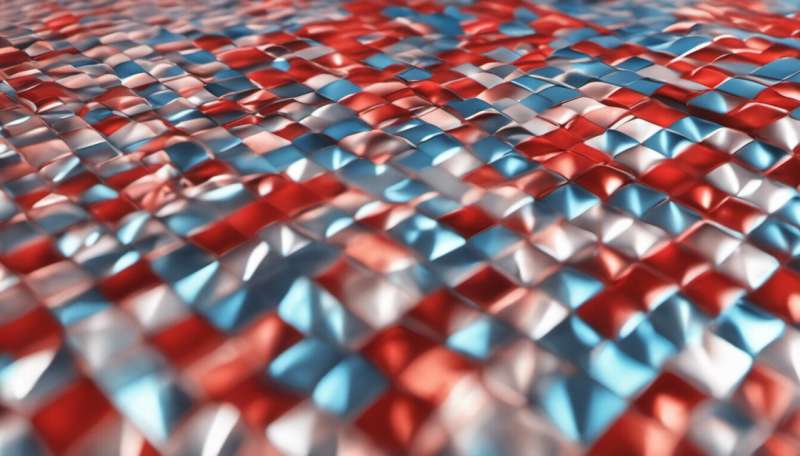Minuscule bumps improve anti-reflective coating

M. S. M. Saifullah and Hemant Raut of A*STAR's Institute of Materials Research and Engineering in Singapore and their co-workers have developed a coating that matches the optical properties of the best conventional anti-reflective coatings (ARCs), while being more robust and easier to produce. ARCs are used in a variety of applications to reduce glare and increase the proportion of light transmitted through the glass or plastic beneath—potentially boosting the output of a solar module, for example.
Roughly 8% of light is reflected as it travels from air into glass, due to the difference in the refractive index between the materials. ARCs have refractive indices that gradually change from lower to higher values, offering a smooth transition for light that minimizes reflection. The moth's eye achieves this with a layer of tiny bumps of 250 nanometers in height, but previous polymer films that mimic this pattern lacked sufficient durability for outdoor applications.
The coating developed by Saifullah, Raut and their team is based on polyhedral oligomeric silsesquioxane (POSS)—a molecular cage built from silicon and oxygen atoms. The team combined a modified form of POSS with three different molecules that can form strong links between them, and then spun the mixture onto glass to ensure an even distribution.
Using a process called nanoimprint lithography, the scientists pressed a non-stick nickel mold onto the mixture and heated it to 130 ºC, triggering a chemical reaction that cross-linked the reagents to form a polymer film. They repeated the process to create a second film on the other side of the glass.
After testing different proportions of the ingredients, the researchers produced coated glass that transmitted 98.2% of the light shone on it, matching the highest values reported for such structures. The film improved the transmittance of light falling at a wide range of angles by gradually bending incoming light rays toward the glass.
The coating showed no degradation after 100 hours in water at 85 ºC and could withstand sulfuric acid as well as a fog of salty water. It was also more scratch-resistant than conventional polymer-based ARCs. "These properties are highly desirable in a robust ARC that is targeted for outdoor commercial applications," says Saifullah.
"The biggest challenge is the scalability of the POSS-based ARCs for use on large-area glass substrates," he adds. "Roll-to-roll nanoimprint lithography is the way to do it. However, factors such as throughput have to be considered before commercialization can be realized."
More information: Raut, H. et al. Robust and durable polyhedral oligomeric silsesquioxane-based anti-reflective nanostructures with broadband quasi-omnidirectional properties, Energy & Environmental Science 6, 1929–1937 (2013). dx.doi.org/10.1039/C3EE24037A
Journal information: Energy & Environmental Science













.jpg)






